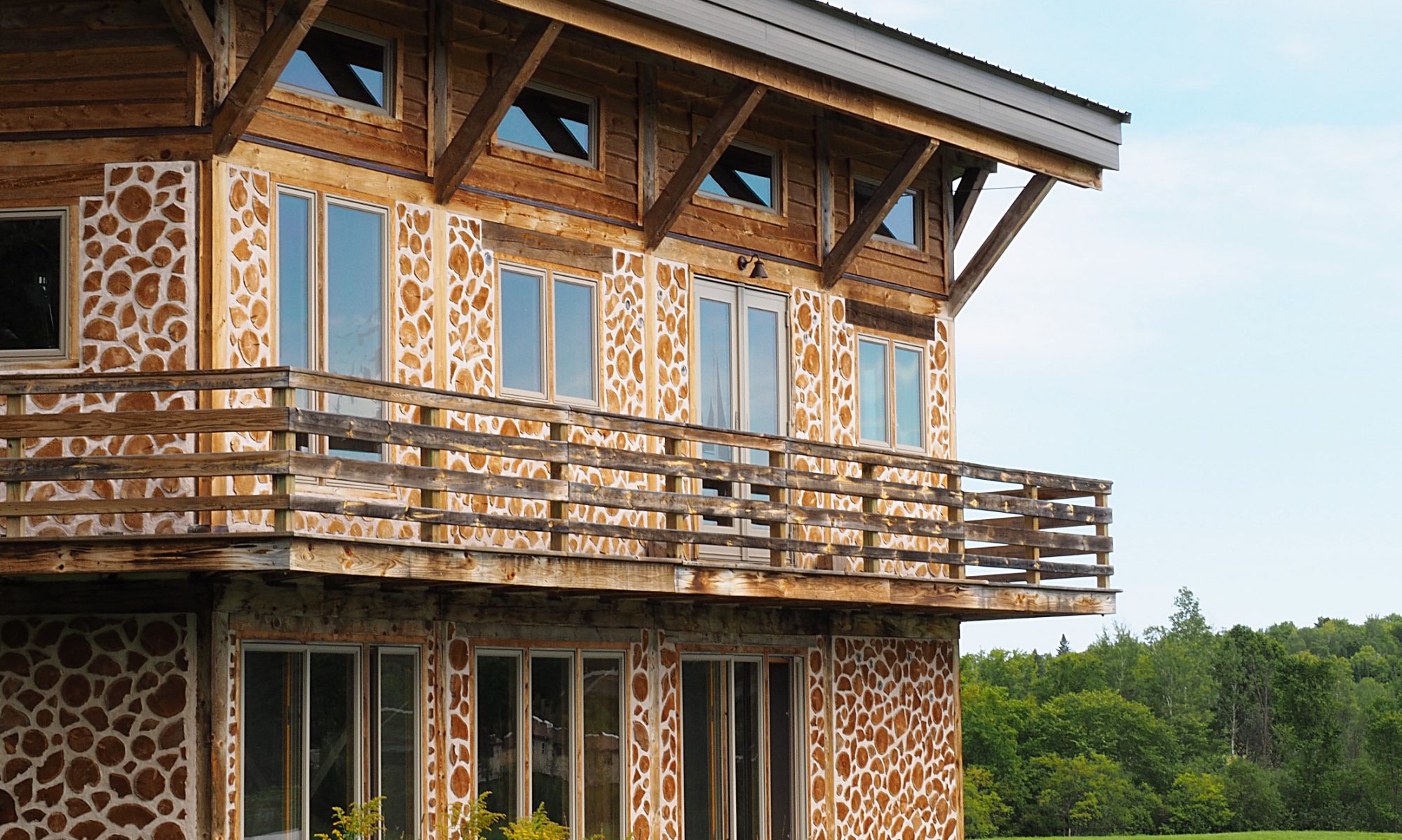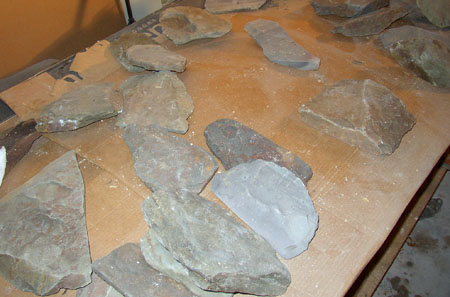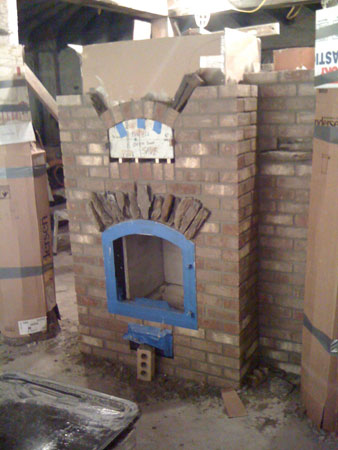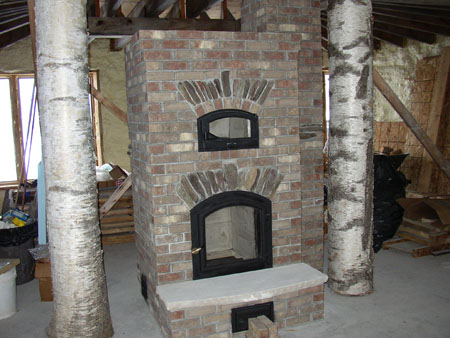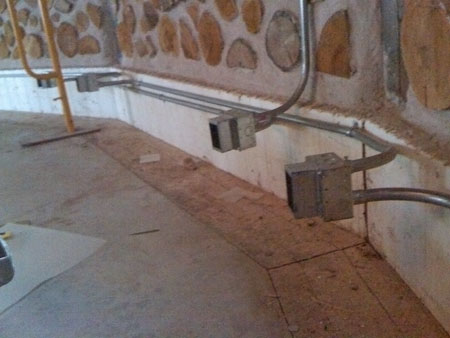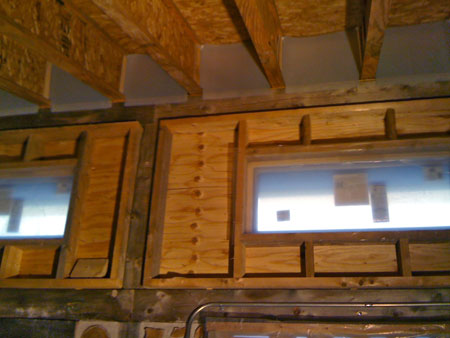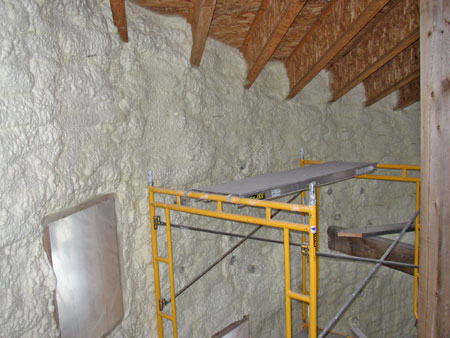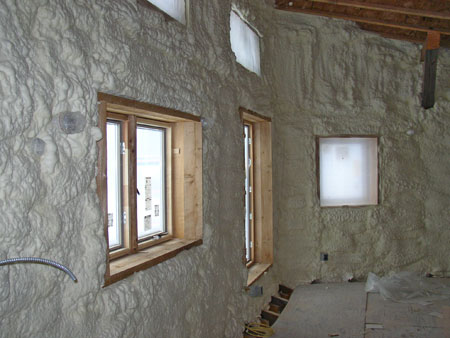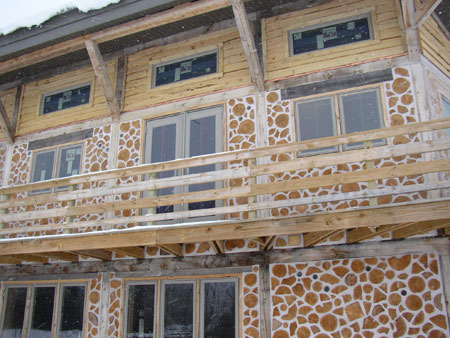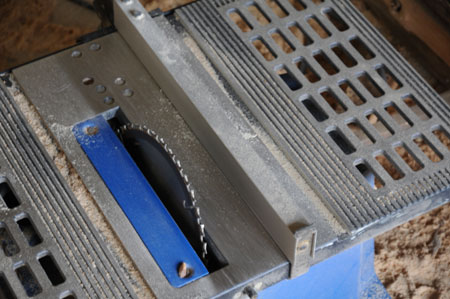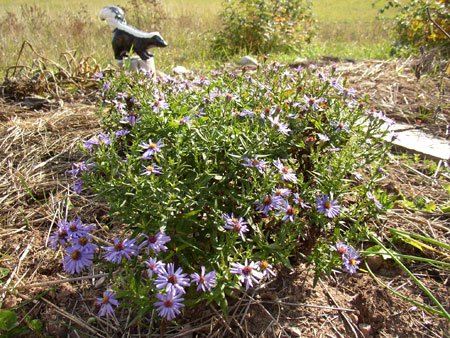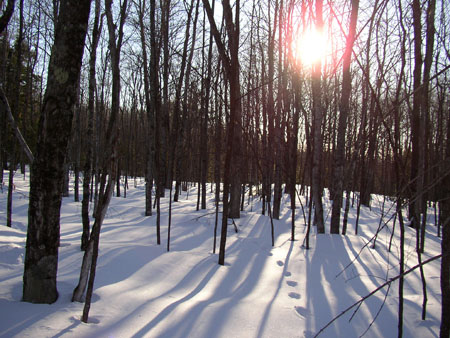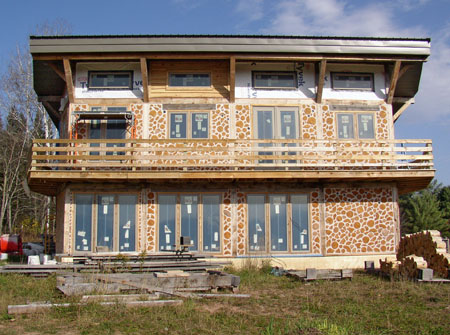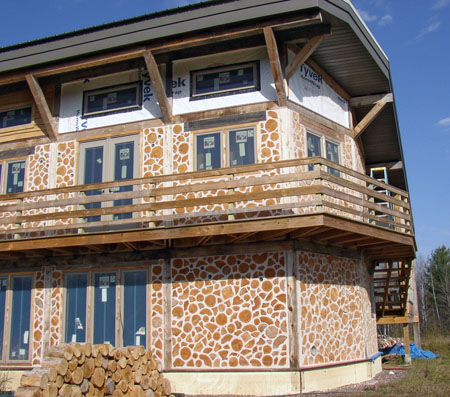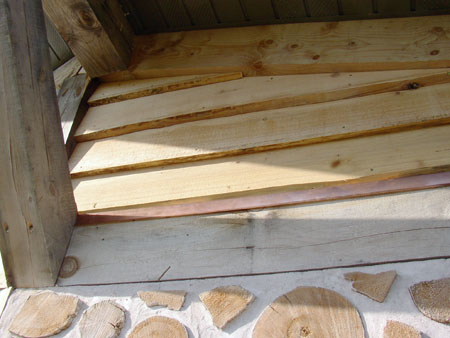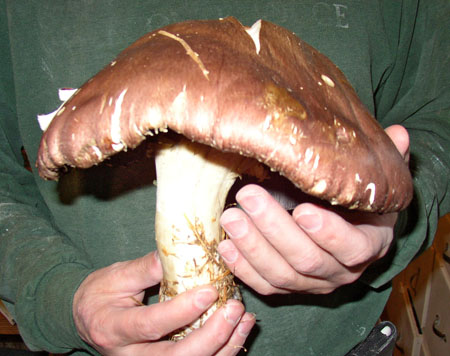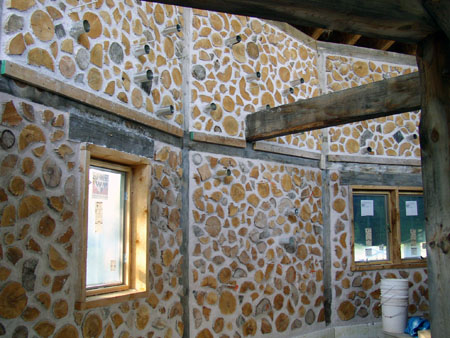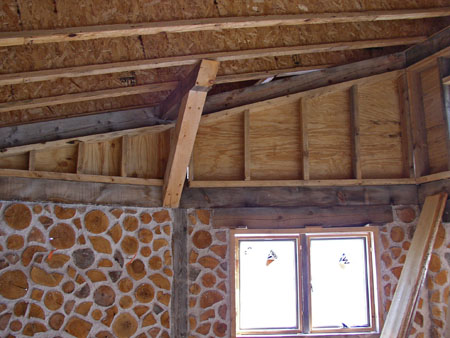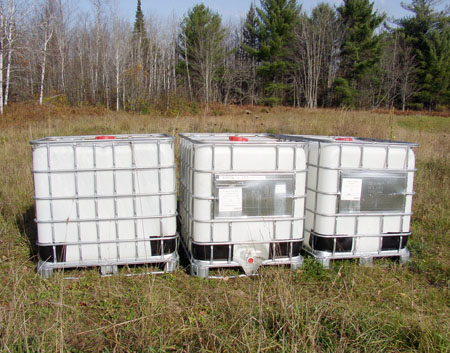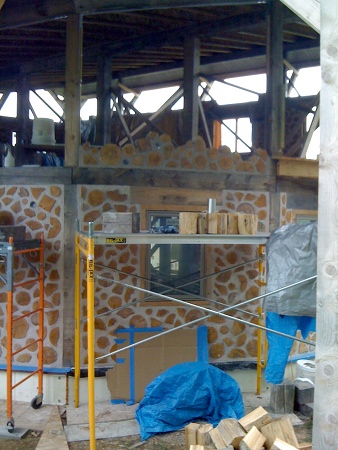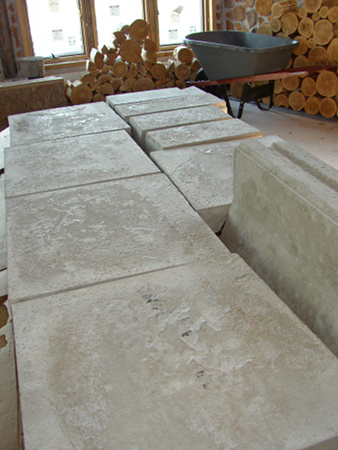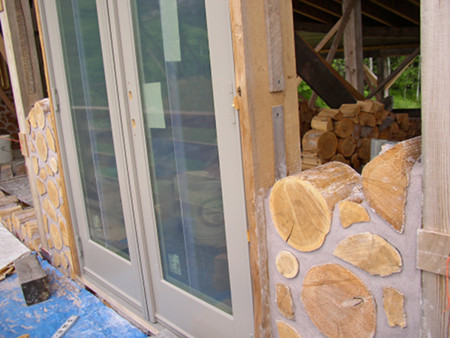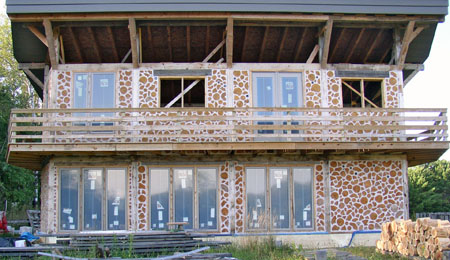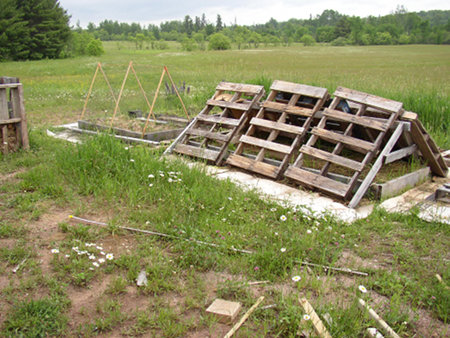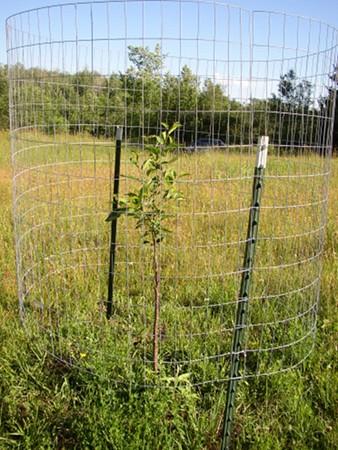“What’s he building in there?
What the hell is he building in there?” -Tom Waits
As Thanksgiving weekend, 2010 approached, we knew that two important things had to happen. We needed running water inside the house, and a way to keep the temperature consistently above freezing. This had become a matter of some urgency because a contractor was coming from Duluth with his crew to build our masonry heater.
We had purchased the masonry heater kit the previous summer at the Midwest Renewable Energy Fair (as mentioned in Greg’s previous post). After wrangling the huge heavy cement blocks up to the house, we decided it would be best to leave the actual assembly to an experienced mason. Fortunately, we had also met Eric Moshier, a contractor who had built many masonry heaters using the Temp-Cast kit, at the MWREF. He was also able to cast additional parts to add a bread oven to the unit. He was willing to come out to the Keweenaw to do the job, so we scheduled the work to be done just after Thanksgiving. We selected and ordered bricks according to Eric’s directions, and collected some beautiful river slates for the masons to incorporate into the brick facade.
We needed running water inside the house. Once we had water, we could hook up the in-floor heating. We spent the better part of Black Friday on a trip down to the nearest Big Box Home Improvement Store in Iron Mountain to purchase a hot water heater. There was just one problem: locating the water line.
Back when Frank Beauchamp poured the foundation, we had him dig a trench and lay in a pipe from near the well up through the slab and into house. So, in theory, it was just a matter of digging down about six feet or so, locating the pipe, and running a water line through it from the well head to the utility room. Greg started digging at the place that had been marked with a post four years previously. And he kept digging further and further into the cold mud. No luck. Eric’s crew arrived, and Greg still hadn’t been able to locate it. It was time to improvise.
To mix their mortar, Eric’s crew collected water from the melting snow running off the roof. Our many plastic buckets were once again put to use. Greg rented a propane heater to keep the house warm enough for the mortar to cure properly. Work on the masonry heater went quickly. They put the kit together, faced it with brick, and added some slate accents.
We were certainly impressed with the results.
The propane heater had bought us bit of time, but it was vital that we get the water running and the in-floor heating system flowing. Greg called Frank, who came out with his backhoe and dug an enormous pit until he finally located that pipe. Greg and I were able to come out after work and snake a water line through the pipe into the house, and electricity from the house out to the well head. This was all very exciting to do in the pitch dark, with snow flying, giant piles of freezing mud everywhere, and a gaping pit in the ground in front of the well. Anyone observing must have wondered what on earth was going on.
“What’s he building in there?
We have a right know.”
